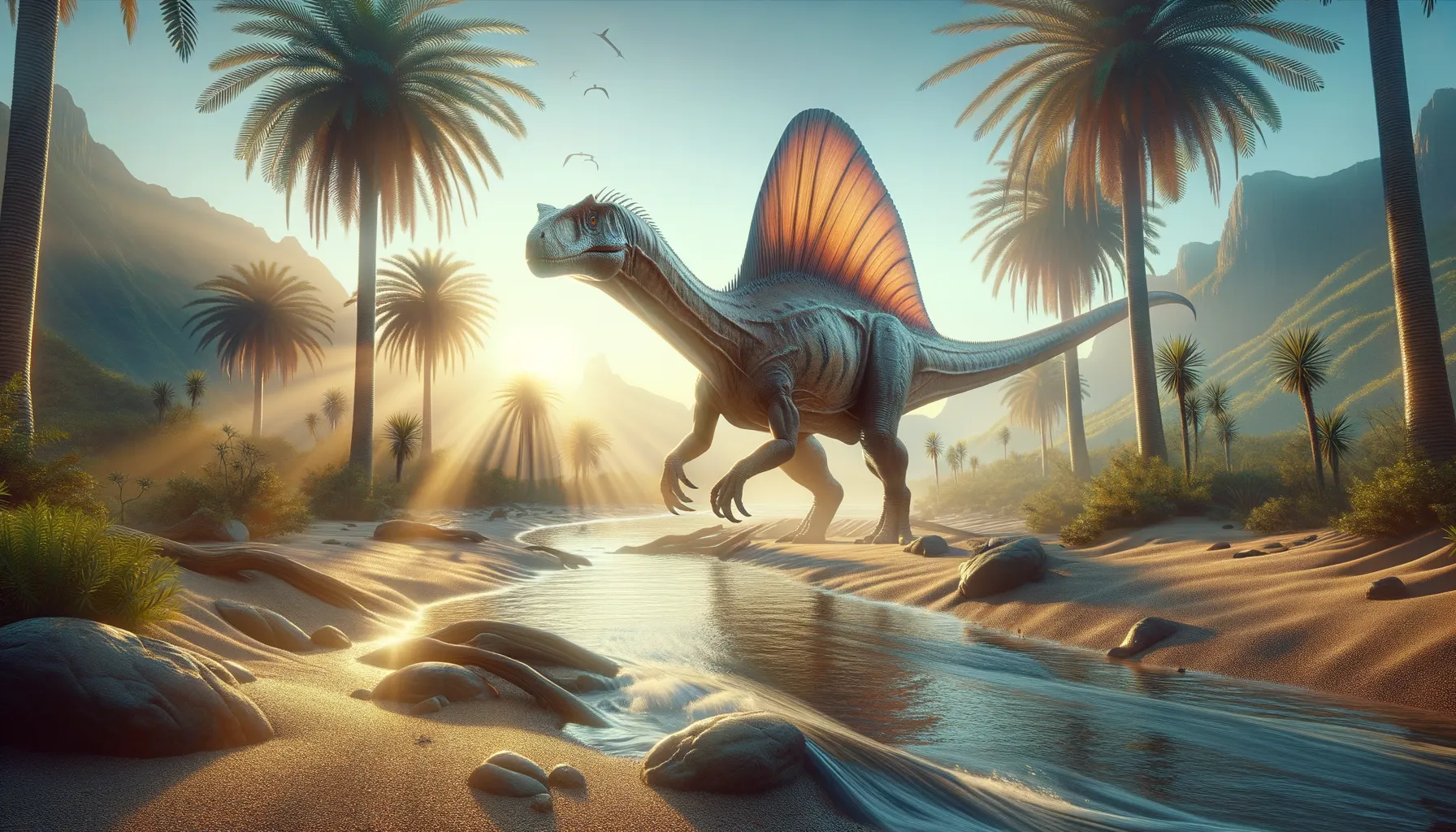
Arizonasaurus
Triassic survivor with a sail to tell.
Period
Triassic
Length
Roughly 5 to 6 meters long.
Height
Approximately 2 meters tall.
Weight
Estimated at around 500 kilograms.
Arizonasaurus is an early archosaur that lived during the Triassic period, known for its distinctive sail-like structure on its back. Found primarily in what is now North America, this prehistoric creature played an important role in the evolutionary history, bridging the gap between earlier reptiles and later dinosaurs. Though not as large as more famous dinosaurs, Arizonasaurus provides a key insight into the diversity and adaptability of early archosaurs.
Diet
Arizonasaurus was a carnivore, likely preying on smaller animals it could overpower. Its diet included insects, small reptiles, and other vertebrates of the period. This varied diet helped it adapt to the changing availability of prey over time.
Hunting
Arizonasaurus may have used ambush tactics, leveraging its environment to get close to prey. Its relatively slow speed suggests it relied more on stealth and surprise rather than chasing down its meals.
Environmental challenges
As a creature of the Triassic period, Arizonasaurus faced significant environmental challenges, such as volatile climates and competition for resources. The increase in volcanic activity during this time led to fluctuating temperatures and alterations in land and prey availability. These changes required adaptability both in hunting strategies and dietary preferences.
Speed
Likely slow due to its bulky frame.
Lifespan
Exact lifespan unknown, likely several decades.
First discovery
Described in 2002 by paleontologist Sterling Nesbitt.
Fun Facts
- Arizonasaurus was not actually a dinosaur, but a creature called a 'crocodile cousin' from a group known as archosaurs.
- It lived around 240 million years ago during the Middle Triassic period.
- The most fascinating feature of Arizonasaurus is its sail-like structure on its back, which might have been used for temperature regulation or attracting mates.
- Fossils of Arizonasaurus have been found in both Arizona, which is how it got its name, and Morocco.
- Arizonasaurus walked on four legs and had a long tail, which helped it balance and move efficiently.
- Despite its fearsome appearance, Arizonasaurus was likely more of a fish-eater, favoring a diet of aquatic prey.
- Arizonasaurus was about 10 feet long, making it a medium-sized predator of its time.
Growth and Development
Arizonasaurus likely experienced steady growth, reaching maturity over several years. As part of its development, the growth of its sail-like structure may have played a role in thermoregulation. This sail could have also had evolutionary implications for display, distinguishing individuals or genders.
Habitat
Arizonasaurus inhabited what is now the southwestern United States, favoring floodplains and semi-arid regions. This environment provided a variety of prey and vegetation, contributing to its survival. Seasonal changes in this habitat required adaptability, especially during periods of drought or flooding.
Interaction with other species
Arizonasaurus interacted with a variety of contemporary species, ranging from other archosaurs to early mammals. Its presence would have influenced smaller, prey species and possibly deterred competitors. These interactions were crucial in shaping the food web dynamics of the time.
Natural lifespan
Its natural lifespan could have reached several decades.
Reproduction
Details on Arizonasaurus reproduction are largely speculative, but it likely followed patterns similar to other archosaurs, involving egg-laying. Parental involvement is also undetermined, though it might have shared some level of care, as seen in similar species.
Social behaviour
While concrete evidence of its social behavior is limited, Arizonasaurus may have engaged in minimal social interaction outside of mating. Its solitary hunting style supports the notion of a more independent lifestyle.
Fossil locations
Fossils of Arizonasaurus have been primarily discovered in Arizona, USA. These sites have offered substantial evidence about the species, helping paleontologists understand more about its ecology and evolutionary relations with other archosaurs.
